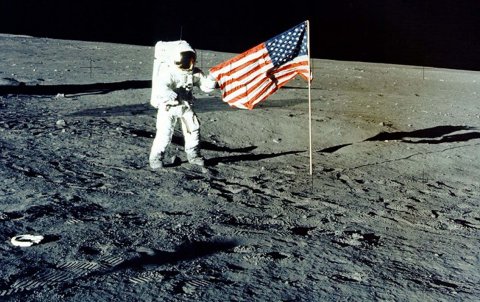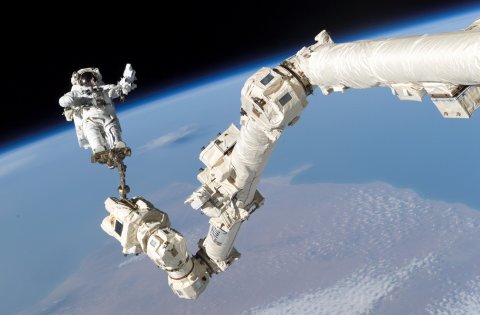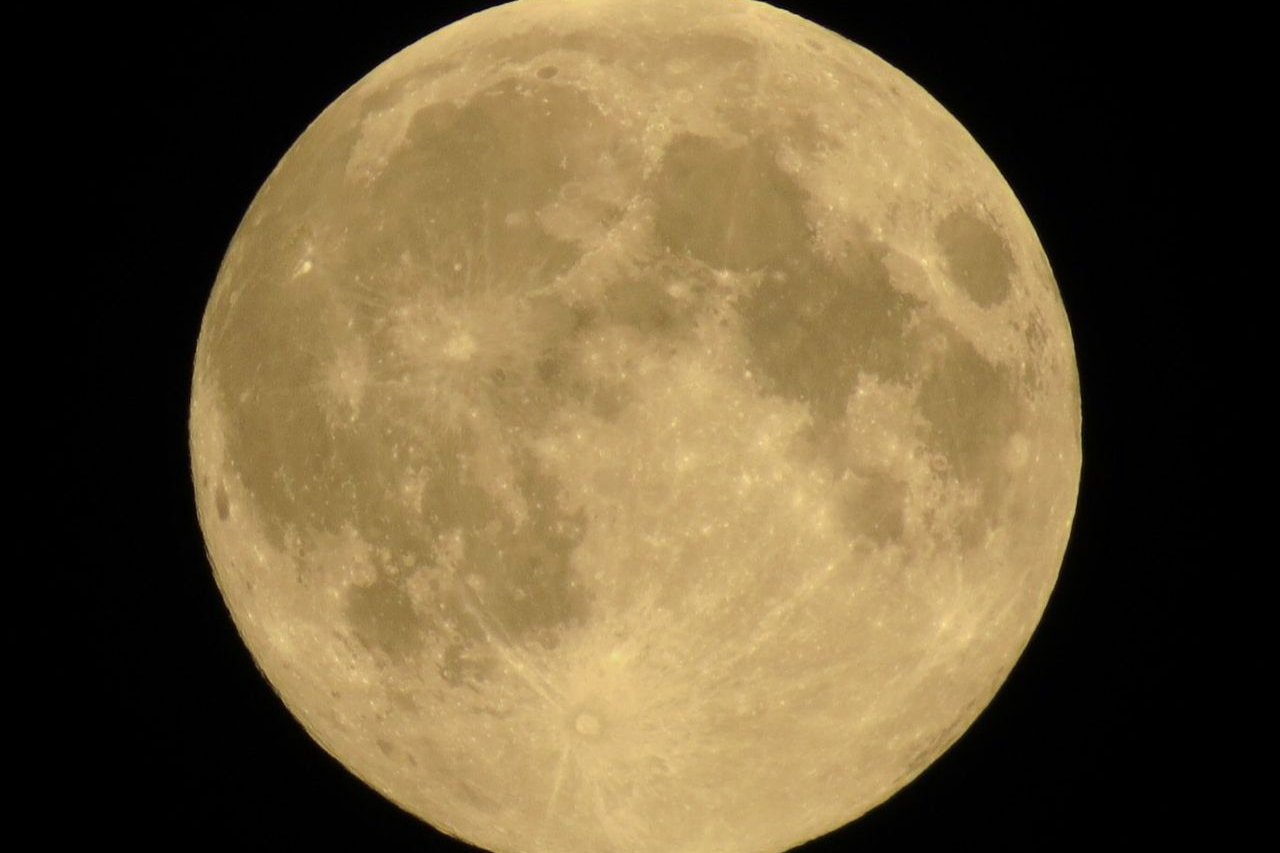President Donald Trump signed a directive this week that includes an initiative to send astronauts to the moon—and eventually to Mars. Humans have not been on the moon since 1972.
NASA focuses on individual missions rather than planning settlements on distant rocky spheres. But that doesn't mean visions of a moon colony are out of the question. To better understand what life on the moon would look like, Newsweek spoke with Robert P. Mueller, senior technologist at NASA with expertise in robotics, the construction of planetary outposts and many other nuts-and-bolt aspects of space exploration.

What would housing on the moon look like?
So we divide structures into two categories. First we have 2-dimensional structures, and that's things like landing pads, roads, parking lots, dust-free zones, even thermal areas that retain the heat for the lunar nights. Then we have 3-dimensional structures that obviously have volume—those are things like hangers, habitats, radiation shelters, micromedioid shelters. So it's more of a shelter, a structure, that is pressurized where the crew can live and we can keep equipment.
What do scientists have to consider in designing architecture for these buildings?
In summary, to build a habitat on the moon or Mars, you have to first consider the extreme environment and then once you have dealt with the design for the extreme environment, you have to deal with the constructability. And the constructability has to be robotic. Humans will not be there at the beginning. The robots will construct the base, and then the humans will come in and live in it. So there's a lot of things to think about, and we're certainly not capable of doing it today, but in the lab, we are developing solutions. I would say within 10 or 20 years we would be ready to do that.

What's extreme about the environment?
First of all, on the moon for example, the thermal temperature swings are extreme. You can go from plus 125 Celsius to minus 130 Celsius [negative 202 to plus 257 degrees Fahrenheit] just by going from the lighted areas to the shadowed areas—temperature drops dramatically.
Then of course you're in a vacuum. There's no atmosphere. It's a pure vacuum. Then on top of that, you have to deal with radiation from deep space. There's two types of radiation—there's solar particle vents come from the Sun and then there's galactic cosmic rays coming from deep space. On top of that, there are micrometeorites that come in on the moon. There's also moonquakes where you have to design your structures to be capable of surviving a small moonquake. And so, this is what we call an extreme environment. So anytime you design for extreme environments, it's a new kind of a design.
What would buildings be made from?
So we plan to build all of those with local resources, indigenous materials. In the first phase, we'll probably bring out modules that are fabricated on Earth and then we'll put those underneath the shelters which are fabricated locally out of regolith—regolith is a crushed rock that you find on the surface of the moon and Mars. And then later on as the technology evolves, then we won't bring anything from Earth anymore. We'll be Earth independent. We'll be completely self-sufficient and we'll be able to send just a few robots up because we have large amounts of energy from the sun and large amounts of materials from the moon or the planet Mars.
3D printing seems to be the leading candidate right now for [building] these structures. It would be large robotic 3D printers that we deploy in space or we could even 3D print the 3D printer. So, bring a small 3D printer that 3D prints the components and then assemble a large 3D printer then use that large 3D printer to build a large structure.
We're developing the technology—we're not ready to go today—but we're developing the technology so in the future we could go and build infrastructure in space.

How would people grow food?
Turns out, that you can grow food very efficiently using LED lights. We've done research that shows that purple light is the best light—the certain wavelength spectrum of light that the plants grow very well in. We use hydroponics. We use aeroponics as well. And we're researching maybe it's even possible to grow the plants in the local soil that's available on the moon and Mars, but that's still research-level. That has not been proven yet.
We're definitely going to have farms in space for two reasons. We need the food for the crew, and we also have significant psychological advantages to having plants in space. That's been proven on the International Space Station.
Where would people get water?
The water is available in space, but it has to be mined. The water is in the soil. You have to dig up the soil and extract the water from the soil. And then you have to purify it because the water has some contaminants in it. So once you've mined the soil that we call regolith, the crushed rock, but it also has water in it on Mars and the moon. So this is one of the main resources that we have. The other good thing about the water is if you take the water and you electrolyze it, you can turn it into hydrogen and oxygen, and that's rocket propellant.
It's the key to life, but it's also the key to transportation in the solar system. So water is the key to everything. We're really looking for water when we go into outer space. It's the most important resource that we can find at this time.

How big would the first settlements be in the future?
At the beginning, it would be governments from many nations. Just like we have the International Space Station, we would send astronauts funded by the governments, and they would be the pioneers. And the pioneers would set up the base and prove that everything works and they are highly trained individuals that would get the base up and running.
Once we have the base proven and it works and everything is up and running, then we would open it up to other people commercial entities, tourists, researchers, scientists, and anybody really who has the money to go. And so then it would turn into a commercial enterprise after the initial stages.
Once the government has established that it's possible, then it turns into a public-private partnership and it gets handed off to commercial space. And then the private market takes over, and then we start creating what we call cis-lunar economy—which is the space between the Earth and the moon that would become a new sphere of economic influence. So in other words, an economy would develop in space where we would use the local resources in space and commercial activity would start happening on the moon and in orbits, in the orbits of the moon, and eventually onto Mars.
Ths interview has been edited for length and clarity.















